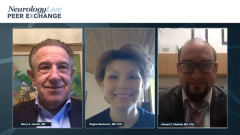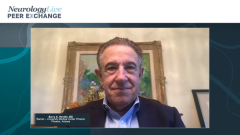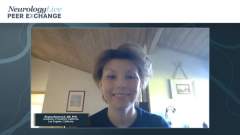
Updates From ACTRIMS 2022 for Relapsing MS
Regina Berkovich, MD, PhD, and Barry A. Hendin, MD, review clinical implications of real-world data on the use of cladribine and other DMTs in patients with relapsing MS that were presented at ACTRIMS 2022.
Episodes in this series

Ahmed Z. Obeidat, MD, PhD: We’re also going to talk about some of recent data at ACTRIMS [Americas Committee for Treatment and Research in Multiple Sclerosis] 2022. Later we’ll talk about some of the AAN [American Academy of Neurology] data. For the ACTRIMS data, there were some studies presented that looked at something called propensity score matching. We’re trying to compare medications in the real world in a way that isn’t head-to-head in a clinical trial but is trying to do something similar. We’re trying to extrapolate some of these data and match the groups as much as we can and then compare whether 1 of the oral agents may have higher efficacy than the others.
They presented data that found oral cladribine had more efficacy with relapse rate and time to relapse compared with the other oral medications, including fingolimod, dimethyl fumarate, and teriflunomide. I’d like to start with Dr Berkovich on this. Talk about the concept of propensity score matching and this particular group of studies that compared the oral agents and the results they got.
Regina Berkovich, MD, PhD: Thank you. Propensity score matching is 1 of the more sophisticated ways of approaching postmarketing experiences. This way, we can compare the destiny of patients who were treated with different medications, but those patients have to be more or less matched as far as age, sex, and level of disability. Different studies have different requirements for the matching. If we see that the study has many points of matching, then we’d probably have more reliable outcomes. Sometimes that’s the case.
Those studies that compared different oral agents were quite well-designed, so we can trust the outcomes. The idea of real-world experience is important because in the real world, we’re not restricted to 2 years. We can take it much longer in terms of observation, and that provides us important information in spite of all the limitations of the study. In my clinical observations—I’m saying “my” because I’m dealing with my own impressions—those are the most powerful tools that we’ll have. If those studies support my clinical observations, then I know I can trust them. If they were to contradict my clinical observations, I’d probably be less supportive of them. But in this case with these particular studies, cladribine showing superiority in the propensity score matching over those medications supports my clinical observations. Therefore, I believe those data.
Ahmed Z. Obeidat, MD, PhD: Thank you very much. Dr Hendin, when you think about propensity score matching, you give us a lot of explanation on it. I’d also like to hear your take on the methodology in these studies, including the comparison for these particular publications in ACTRIMS. We have to mention that they’re posters and haven’t been reviewed, but they were presented at the conference.
Barry A. Hendin, MD: Sure. As Regina elegantly discussed, we have always relied on the phase 3 pivotal trials, but we recognize the limitations of them. Those are 2-year studies with perfect patients with exclusions if they think they would alter outcome. But we’re stuck with the real world. What do we do with patients in the real world? These are patients who might have diabetes, are older or younger, and so on.
The answer is you need a methodology that tries to take into account real-world data in the absence of a phase 3 randomized prospective trial, or in the absence of head-to-head studies that are never going to happen. Propensity matching or propensity scoring allows us to take like patients, at least for those features that we know—age, sex, duration of therapy, etc—and try to match them in the real world. This way, we can understand in similar patients, with propensity matching or a more sophisticated propensity scoring, how to look at real-world data in the absence of a head-to-head trial.
The GLIMPSE study presented at ACTRIMS showed some interesting outcomes in terms of the benefits of cladribine when compared with other widely used oral agents. I was interested in the outcome, but I remain interested in propensity matching and propensity scoring, not as perfect tools but as imperfect tools to complement the imperfect tools of the phase 3 trials.
Ahmed Z. Obeidat, MD, PhD: Thank you very much. As Dr Berkovich also mentioned, the strength of those studies comes from how many of these variables we include in the score to make sure that we’re covering several of the aspects related to the disease and patient demographics. But they’re from different real-world experiences. We’re trying the best we can to match, so we can have adequate comparisons between the agents. Until we have head-to-head trials between highly effective therapies, we’re probably going to be continuing to use this type of methodology to get some real-world conclusions and information to help guide our practices and see if they match what we see in our own practices. This is a great discussion.
Transcript Edited for Clarity
Newsletter
Keep your finger on the pulse of neurology—subscribe to NeurologyLive for expert interviews, new data, and breakthrough treatment updates.







































